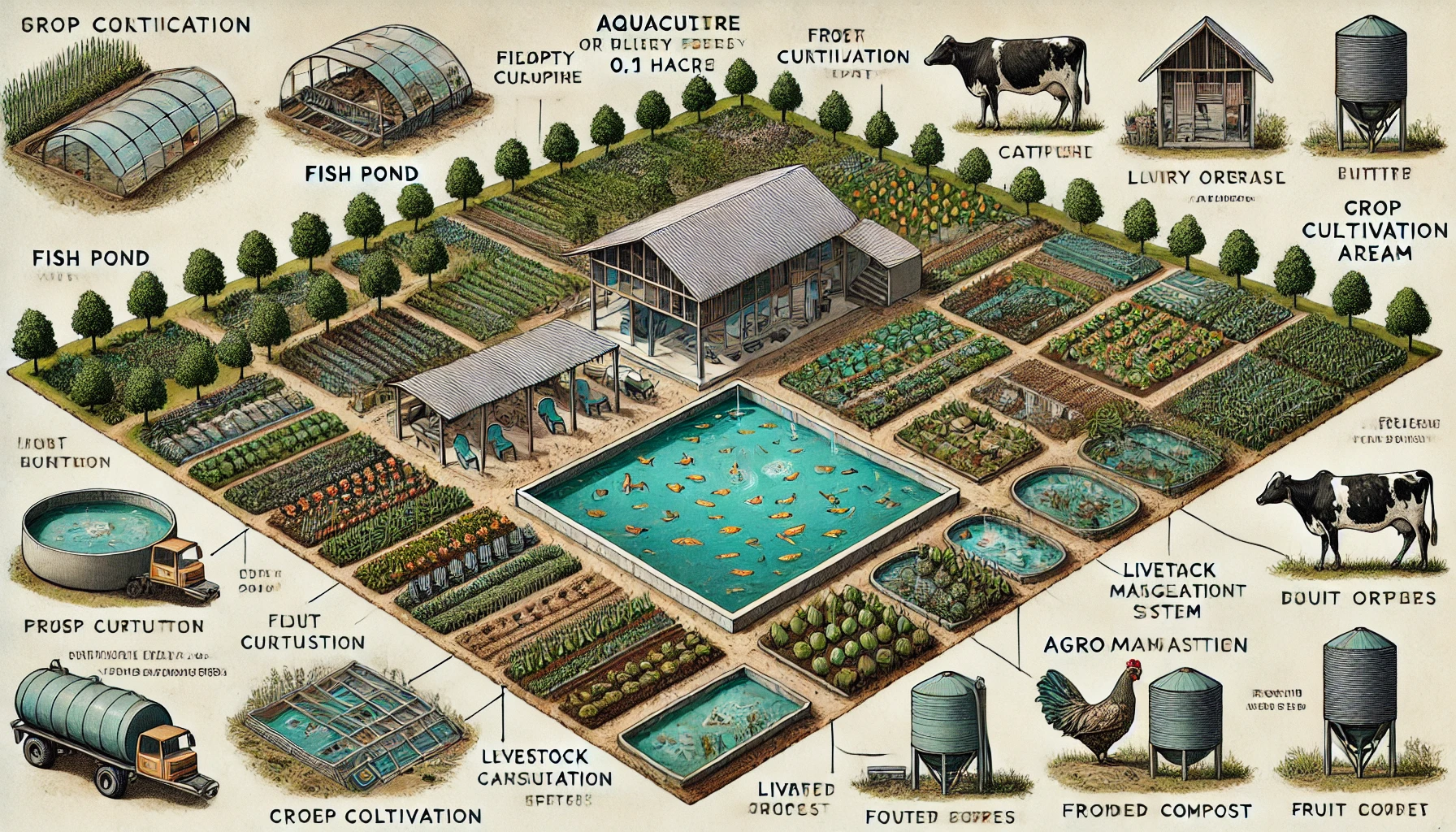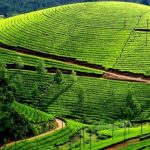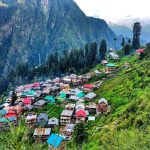
Starting an integrated farming system (IFS) on 1 hectare of land is a great idea for sustainable agriculture. IFS combines multiple farming activities (crops, livestock, aquaculture, etc.) to enhance productivity, minimize waste, and create a self-sustaining ecosystem. Here’s a detailed overview, including ideas for layout and a project outline:
1. Components of Integrated Farming:
- Crop Cultivation: Main crops (cereals, vegetables, fruits) and cash crops.
- Livestock Farming: Dairy cows, goats, poultry, or fish farming.
- Aquaculture: Fish ponds (e.g., catfish, tilapia) for water recycling.
- Horticulture: Fruit orchards (papaya, mango, guava) or high-value crops.
- Vermicomposting: Organic compost production using farm waste.
- Agroforestry: Growing trees for fruits, fodder, or timber.
- Renewable Energy: Solar panels or biogas from livestock waste.
2. Example Layout for 1 Hectare Land:
General Allocation:
| Component | Area Allocation | Activities |
|---|---|---|
| Crop Cultivation | 0.5 ha (50%) | Vegetables, cereals, legumes, or cash crops |
| Livestock Shed | 0.1 ha (10%) | Dairy cows, goats, or poultry farming |
| Aquaculture | 0.1 ha (10%) | Fish pond or duck-fish integration |
| Horticulture | 0.15 ha (15%) | Fruit trees (mango, banana, guava, papaya) |
| Vermicomposting | 0.05 ha (5%) | Organic composting using crop/livestock waste |
| Agroforestry | 0.05 ha (5%) | Timber or fodder trees |
| Other (Paths, Storage) | 0.05 ha (5%) | Roads, pathways, tool storage, or sheds |
3. Suggested Crop and Livestock Combinations:
- Crops: Rotate cereals (rice, wheat) with vegetables (tomato, brinjal, okra).
- Livestock: 2-3 dairy cows/goats + 50-100 poultry birds.
- Fish: Tilapia or catfish in the fish pond.
- Fruit Trees: Papaya, banana, or guava for quick returns.
4. Waste Utilization Plan:
- Livestock dung for biogas and manure.
- Crop residues for compost or animal feed.
- Fish pond water for irrigation (nutrient-rich).
5. Preliminary Financial Project Report (Estimates in INR/USD):
| Component | Estimated Cost (INR) | Notes |
|---|---|---|
| Land Preparation | 20,000 – 30,000 | Plowing, leveling |
| Crop Seeds & Inputs | 50,000 – 70,000 | Seeds, fertilizers, pesticides |
| Livestock Purchase | 1,00,000 – 1,50,000 | Dairy cows, goats, poultry birds |
| Fish Pond Construction | 80,000 – 1,00,000 | Pond excavation, fish seed |
| Horticulture (Fruits) | 30,000 – 40,000 | Planting fruit trees |
| Vermicomposting Unit | 20,000 | Earthworms, construction |
| Miscellaneous | 30,000 | Irrigation, storage, fencing |
| Total | 3,30,000 – 4,50,000 | Approximate initial investment |
6. Expected Returns (Annual):
| Component | Expected Income (INR) | Notes |
|---|---|---|
| Crops (2-3 harvests) | 1,50,000 – 2,00,000 | Based on market prices |
| Livestock (Milk/Meat) | 1,50,000 – 2,00,000 | Dairy or poultry income |
| Fish Farming | 50,000 – 1,00,000 | Fish sales |
| Fruits (Horticulture) | 50,000 – 70,000 | Mango, papaya, banana |
| Vermicompost Sales | 30,000 – 50,000 | Organic compost sales |
| Total Annual Income | 4,30,000 – 6,20,000 | Estimated annual revenue |
7. Benefits of Integrated Farming:
- Sustainability: Minimizes external inputs by recycling farm waste.
- Diverse Income Streams: Multiple sources of income reduce risks.
- Eco-Friendly: Organic farming methods enhance soil health and biodiversity.
Next Steps in the Next Chapter:
- Create a Detailed Business Plan with timelines.
- Obtain Necessary Permits for livestock and aquaculture.
- Explore Government Subsidies for integrated farming and renewable energy.
Financial and Business expert having 30+ Years of vast experience in running successful businesses and managing finance.





